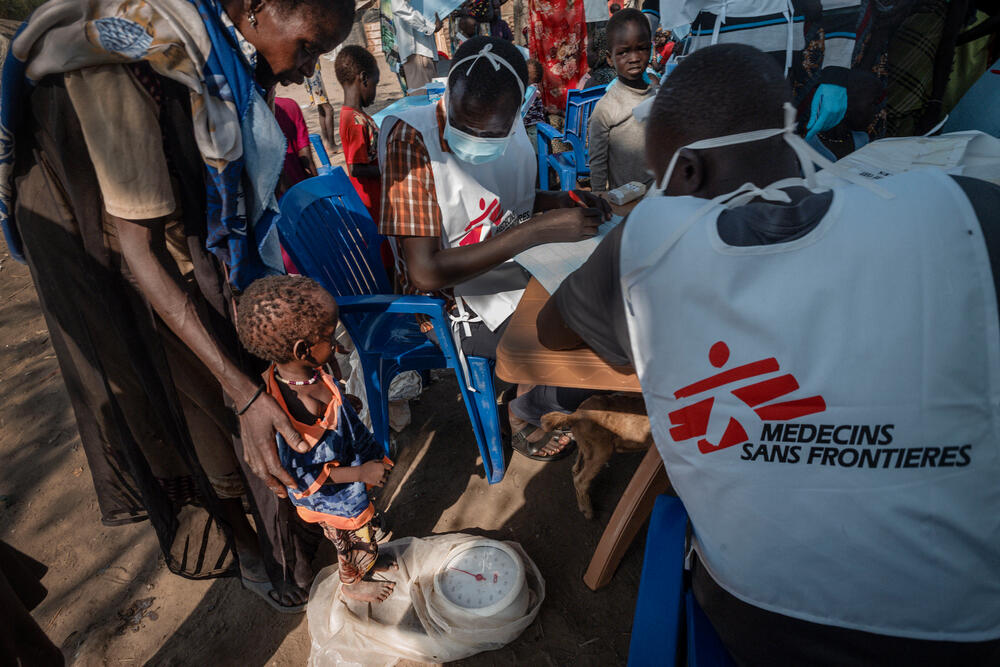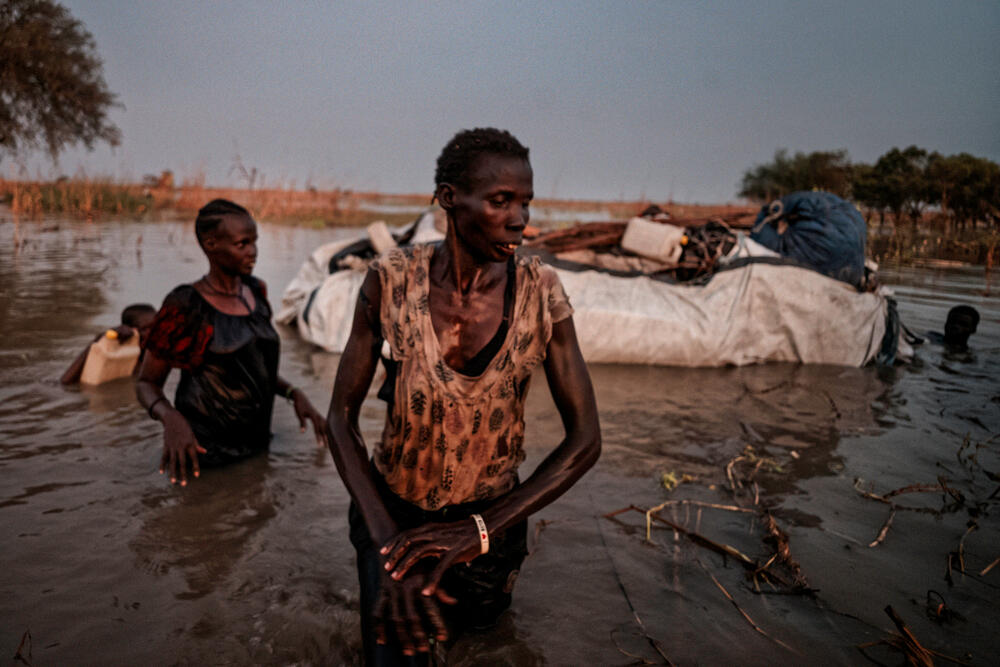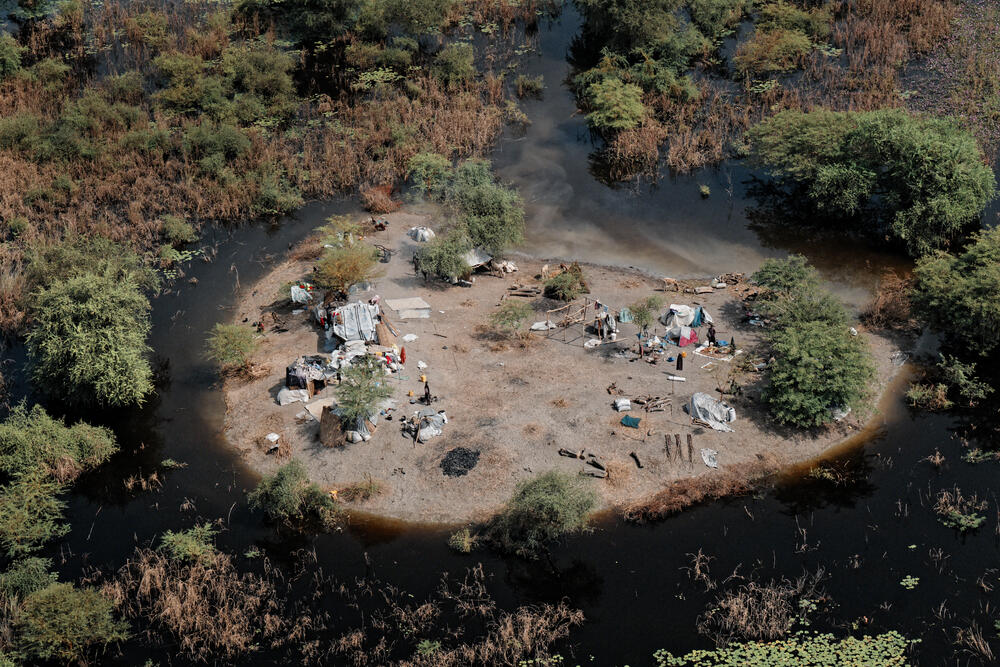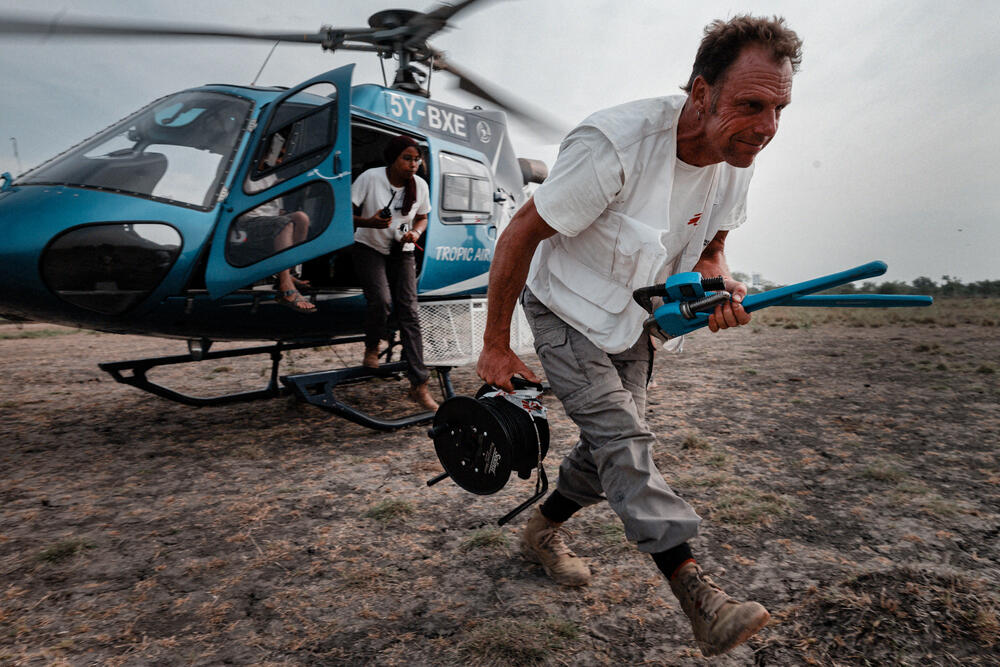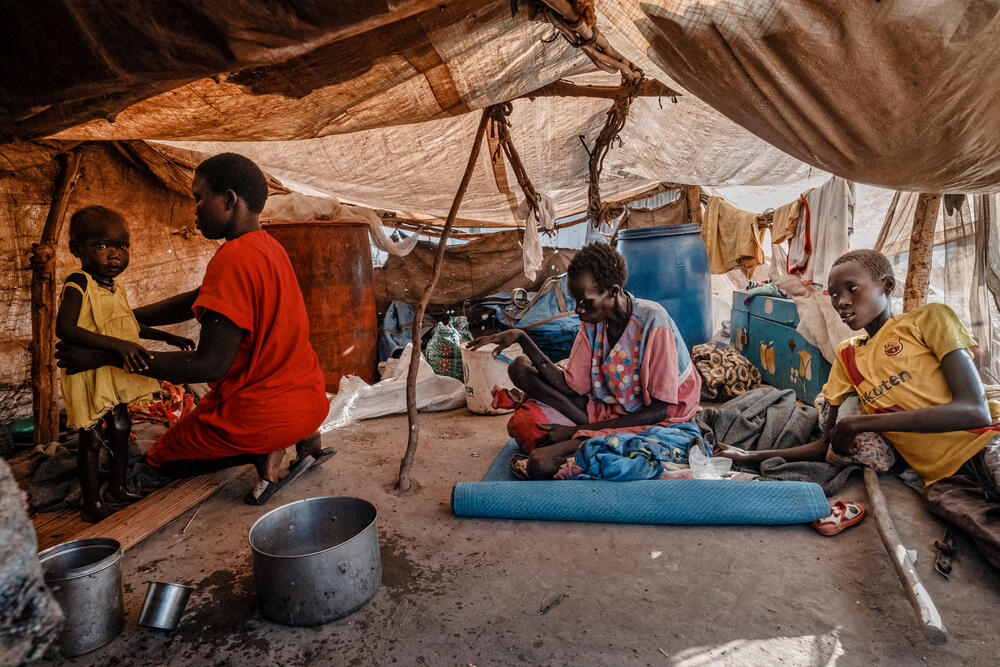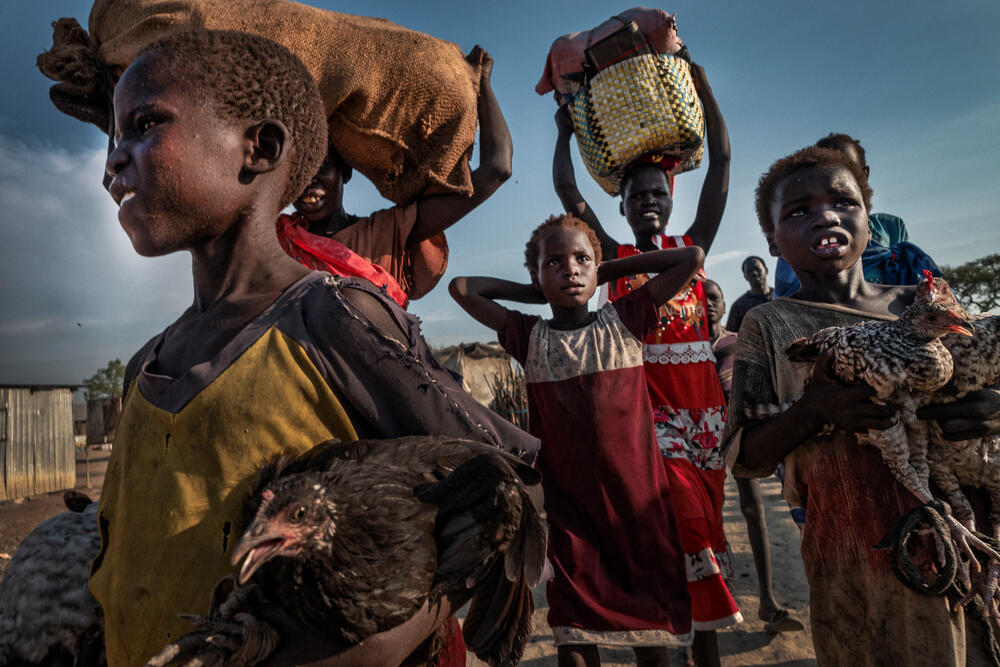Photostory: Surviving South Sudan’s catastrophic floods
MSF teams are responding to a chronic crisis that has hit more than 835,000 people
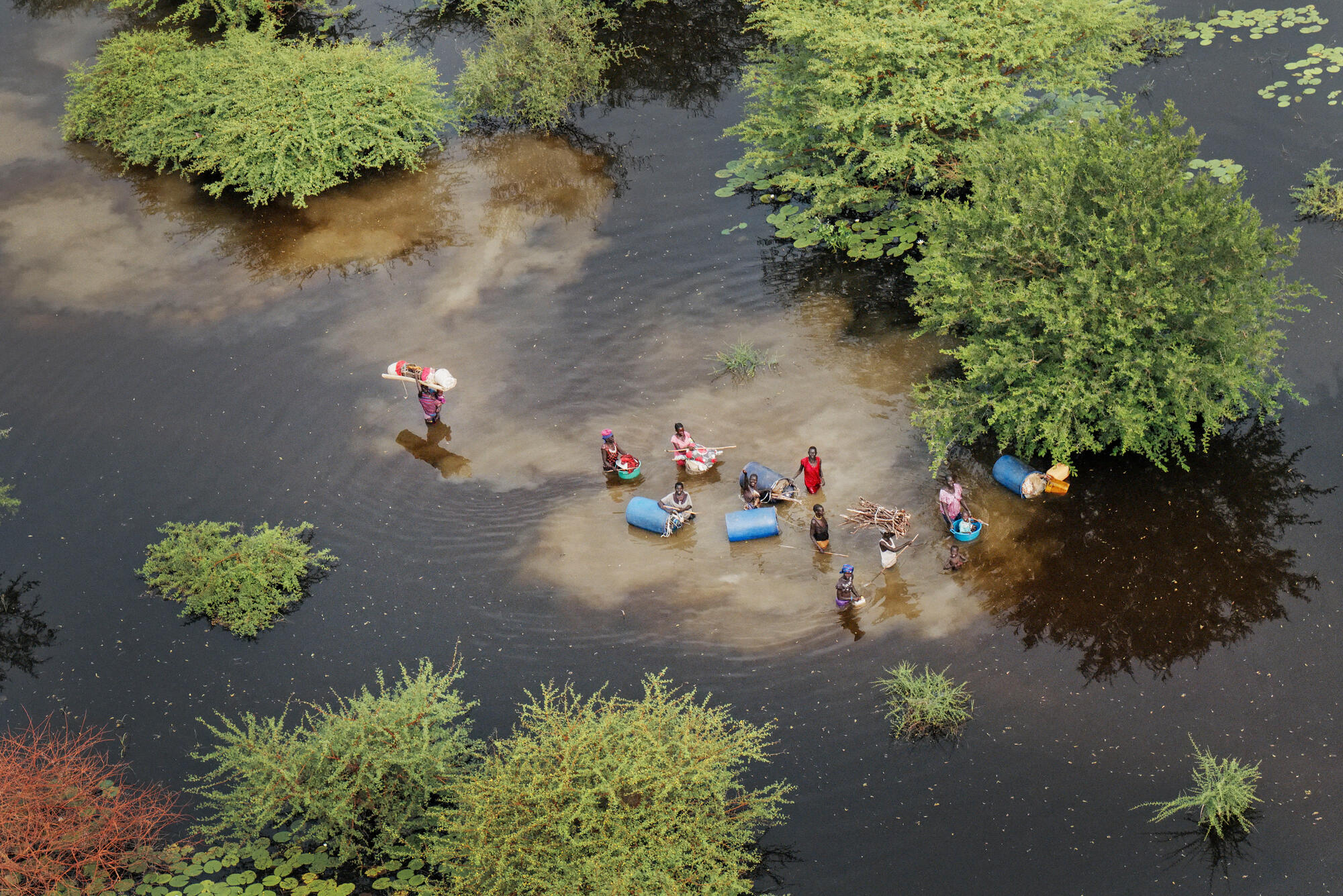
When the floodwater levels started rising in her village, 21-year-old Nyabeel and her husband were torn about what to do. Leaving their land, which they relied on for food, was a tough decision.
“We spent three days moving. It was challenging with four children and a herd of goats,” she says.
Eight months on since the flooding began, people in South Sudan’s northern Unity State continue to suffer – stuck in poor living conditions and at risk of outbreaks of infectious and waterborne diseases.
Spread across several makeshift camps, they face a loss of income, food insecurity, malnutrition, and a lack of safe drinking water. According to the UN, an estimated 835,000 people have been affected.
Nyabeel had brought her one-year-old to MSF’s mobile clinic in Kuermendoke camp, Rubkona town, for treatment for severe malnutrition and essential vaccinations.
Back in her village, she had relied on cultivating her land, as well as milk from her goats for food.
“We had a more stable life than the one [in the camp], now we eat one meal a day of maize.”
Kuermendoke is one of three camps that have a high percentage of children under five suffering from severe acute malnutrition.
“Our nutritional survey demonstrated that the severe acute malnutrition prevalence in the camps is well above the World Health Organization’s two percent emergency threshold,” says Dr Reza Eshaghian, medical team leader for MSF’s emergency flood response.
The impact of the flooding is palpable, explains the MSF medic.
“When you walk through the camps, you see malnourished children, people collecting dirty flood water to drink, cattle collapsing and their carcasses everywhere. Such poor conditions are harming people’s health.”
Initial UN studies suggest about 65,000 hectares of cultivated land have been damaged due to flooding, while over 800,000 livestock animals have died across eight of South Sudan’s 10 states.
Having lost so much of their cattle, many displaced women are resorting to collecting firewood to make an income. At the same time, increases in food prices are making it more difficult for displaced people to get food.
This situation has driven an 80 percent increase in admissions to our feeding centre, with MSF now opening a third ward at our hospital at Bentiu – South Sudan’s largest displacement camp.
MSF teams are also running mobile clinics that visit camps in and around the Bentiu, Mayom, Rubkona regions, responding to cases of malaria, malnutrition and acute watery diarrhoea.
For most displaced people, it’s now become almost impossible to find safe drinking water.
“Our only source of water for drinking, cooking and washing is the floodwater,” says Nyapal, a mother of four.
Added to this, sanitation facilities, which were already poorly maintained before the flooding, are now in a critical condition.
“For a while, flooding meant it was impossible to access the waste treatment ponds,” says Cawo Yassin Ali, a water and sanitation specialist deployed with MSF’s emergency team.
“This led to an accumulation of sewage in the camp latrines, which then overflowed into open sewer canals where children frequently play.”
To reduce the risk of outbreaks, MSF has now set up a sewage treatment plant inside the camp to contain and treat faecal waste.
Although the water levels are slowly starting to recede around Bentiu, it’s still not clear when Nyabeel, Nyapal and thousands of other displaced people will be able to return home.
“We don’t have anything here, we came empty-handed, the village is covered with water, and we don’t know when it will dry,” says Nyabeel.
Sadly, this means that until people can return home, they will be forced to continue living in such precarious conditions.
This poses an added challenge for humanitarian organisations, requiring them to respond to the immediate needs while recognising the protracted nature of this crisis and working to raise standards beyond the initial emergency threshold.
“There are immense needs, including the need for proper shelters, clean water and sanitation infrastructure, quality healthcare, food security and livelihood support,” says Dr Eshaghian.
“Humanitarian organisations, donors and the South Sudanese Government need to act now before it is too late. They cannot afford to wait any longer.”
*The names of staff and patients have been changed to protect their identity
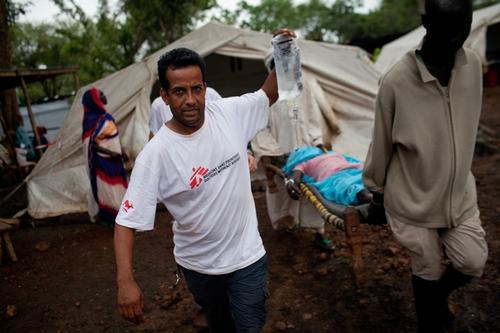
Help us prepare for the next emergency
South Sudan flooding crisis
South Sudan is facing a severe flooding crisis that has hit more than 835,000 people.
Vast regions of the country are affected by rising water levels, tens of thousands of people have been forced from their homes and deadly disease outbreaks are on the rise.
